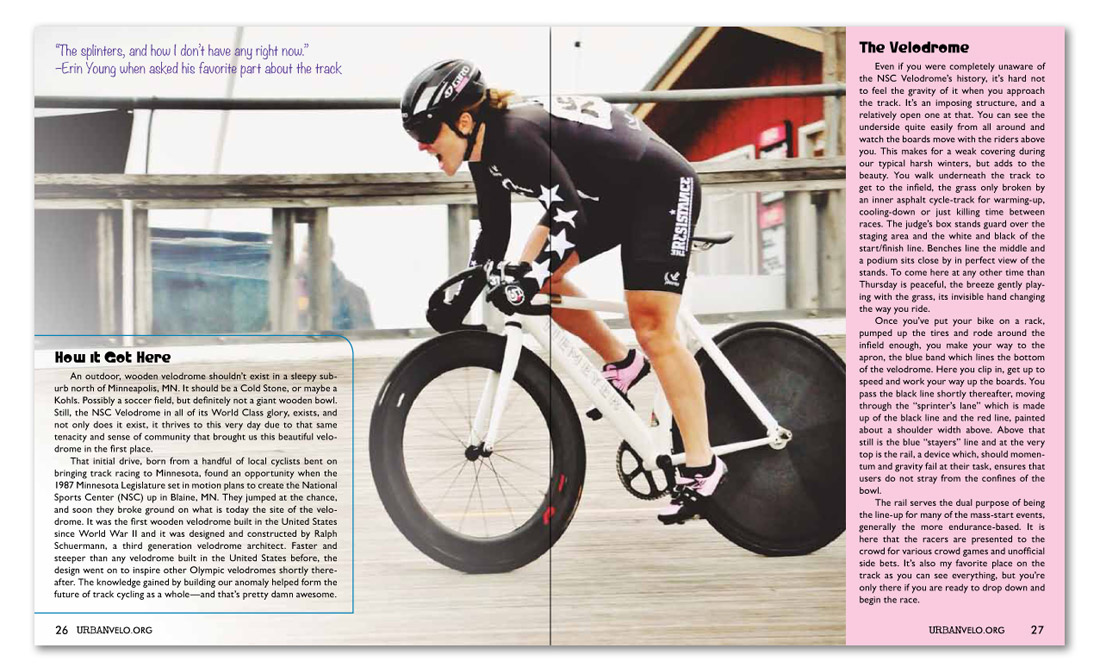


How it Got Here
An outdoor, wooden velodrome shouldn’t exist in a sleepy suburb north of Minneapolis, MN. It should be a Cold Stone, or maybe a Kohls. Possibly a soccer field, but definitely not a giant wooden bowl. Still, the NSC Velodrome in all of its World Class glory, exists, and not only does it exist, it thrives to this very day due to that same tenacity and sense of community that brought us this beautiful velodrome in the first place.
That initial drive, born from a handful of local cyclists bent on bringing track racing to Minnesota, found an opportunity when the 1987 Minnesota Legislature set in motion plans to create the National Sports Center (NSC) up in Blaine, MN. They jumped at the chance, and soon they broke ground on what is today the site of the velodrome. It was the first wooden velodrome built in the United States since World War II and it was designed and constructed by Ralph Schuermann, a third generation velodrome architect. Faster and steeper than any velodrome built in the United States before, the design went on to inspire other Olympic velodromes shortly thereafter. The knowledge gained by building our anomaly helped form the future of track cycling as a whole—and that’s pretty damn awesome.
The Velodrome
Even if you were completely unaware of the NSC Velodrome’s history, it’s hard not to feel the gravity of it when you approach the track. It’s an imposing structure, and a relatively open one at that. You can see the underside quite easily from all around and watch the boards move with the riders above you. This makes for a weak covering during our typical harsh winters, but adds to the beauty. You walk underneath the track to get to the infield, the grass only broken by an inner asphalt cycle-track for warming-up, cooling-down or just killing time between races. The judge’s box stands guard over the staging area and the white and black of the start/finish line. Benches line the middle and a podium sits close by in perfect view of the stands. To come here at any other time than Thursday is peaceful, the breeze gently playing with the grass, its invisible hand changing the way you ride.
Once you’ve put your bike on a rack, pumped up the tires and rode around the infield enough, you make your way to the apron, the blue band which lines the bottom of the velodrome. Here you clip in, get up to speed and work your way up the boards. You pass the black line shortly thereafter, moving through the “sprinter’s lane” which is made up of the black line and the red line, painted about a shoulder width above. Above that still is the blue “stayers” line and at the very top is the rail, a device which, should momentum and gravity fail at their task, ensures that users do not stray from the confines of the bowl.
The rail serves the dual purpose of being the line-up for many of the mass-start events, generally the more endurance-based. It is here that the racers are presented to the crowd for various crowd games and unofficial side bets. It’s also my favorite place on the track as you can see everything, but you’re only there if you are ready to drop down and begin the race.